Acarospora nitrophila H. Magn.
Göteborg. Vetensk.-och Vitter.-Handl., Ser. 4, 28, 2: 74, 1924.
Synonyms: Acarospora moraviae H. Magn.
Distribution: N - TAA (Nascimbene 2004), Lomb, Piem (Morisi & Sereno 1995, Matteucci & al. 2013, Giordani & al. 2014), VA (Piervittori & Isocrono 1999, Isocrono & al. 2008, Favero-Longo & Piervittori 2009, Matteucci & al. 2015c), Lig. C - Tosc, S - , Si (Grillo & Caniglia 2004).
Description: Thallus crustose, episubstratic, of dispersed or contiguous, sometimes substipitate 0.3-0.5(-1.4) mm wide 0.3-0.6 mm thick, flat to slightly convex, sometimes lobulate areoles, the upper surface dark brown, red brown or pale brown, epruinose or rarely partially pruinose, sometimes minutely rugulose (noticeable when wetted). Lower surface partly white in young areoles, but usually pale brown to blackish brown. Epicortex lacking or <10 μm thick and giving areoles a shiny appearance; cortex 20-30(-40) μm thick, the upper layer dark brown and narrow, often one cell thick, the lower layer colourless, with round or variably shaped, mostly 3-6 μm wide, sometimes vertically arranged cells; algal layer 80-120 μm thick, not dense, relatively even, uninterrupted by hyphal bundles but with occasionally narrow strands of hyphae visible between the algal cells; medulla usually up to 400 μm thick, of thin-walled, branched, densely intricate to vertically arranged, 2-4(-5) μm thick hyphae with some round to irregular bloated and angular cells. Apothecia 1-10 per areole, 0.1-0.4(-0.5) mm across, immersed or semi-immersed, with a dull brown, usually epruinose disc, with or without an elevated thalline margin. Proper exciple to 15-30 μm wide, sometimes visible as a narrow parathecial ring; epithecium brownish, c. 10 μm high; hymenium colourless, (90-)100-130(-150) μm high, the hymenial gel hemiamyloid, IKI+ immediately red or blue slowly turning red; paraphyses (1-)1.5(-2) μm wide at mid-level, the apical cells barely expanded; subhymenium 20-30 μm high, IKI+ blue; hypothecium indistinct, to 20 μm high. Asci 100-200-spored, cylindrical to narrowly clavate, 80-120 x 10-20 μm. Ascospores 1-celled, hyaline, ellipsoid, 4-5 x (1.5-)2 μm, Pycnidia rare. Conidia simple, c. 1.5 x 0.7 μm. Photobiont chlorococcoid. Spot tests: cortex and medulla K-, C-, KC-, P-, UV-. Chemistry: without lichen substances.Note: a lichen of steeply inclined to rain-sheltered surfaces of basic siliceous rocks, usually in species-poor communities, mostly near settlements. This is one of the most misunderstood species of the genus in Europe (Knudsen & al., in press). Earlier records by Nimis & Tretiach (1999) from Marche and Basilicata, and Nimis & al. (1996b) from Sicily are erroneous (fide Knudsen in TSB). The only confirmed record from Italy is that by Nascimbene (2004) from the Stelvio National Park (Knudsen & al., in press), all other records require confirmation.
Growth form: Crustose
Substrata: rocks
Photobiont: green algae other than Trentepohlia
Reproductive strategy: mainly sexual
Commonnes-rarity: (info)
Alpine belt: absent
Subalpine belt: very rare
Oromediterranean belt: absent
Montane belt: very rare
Submediterranean belt: very rare
Padanian area: absent
Humid submediterranean belt: very rare
Humid mediterranean belt: absent
Dry mediterranean belt: absent

Predictive model
Growth form: Crustose
Substrata: rocks
Photobiont: green algae other than Trentepohlia
Reproductive strategy: mainly sexual
Commonnes-rarity: (info)
Alpine belt: absent
Subalpine belt: very rare
Oromediterranean belt: absent
Montane belt: very rare
Submediterranean belt: very rare
Padanian area: absent
Humid submediterranean belt: very rare
Humid mediterranean belt: absent
Dry mediterranean belt: absent

Predictive model
 DOLICHENS
DOLICHENS




